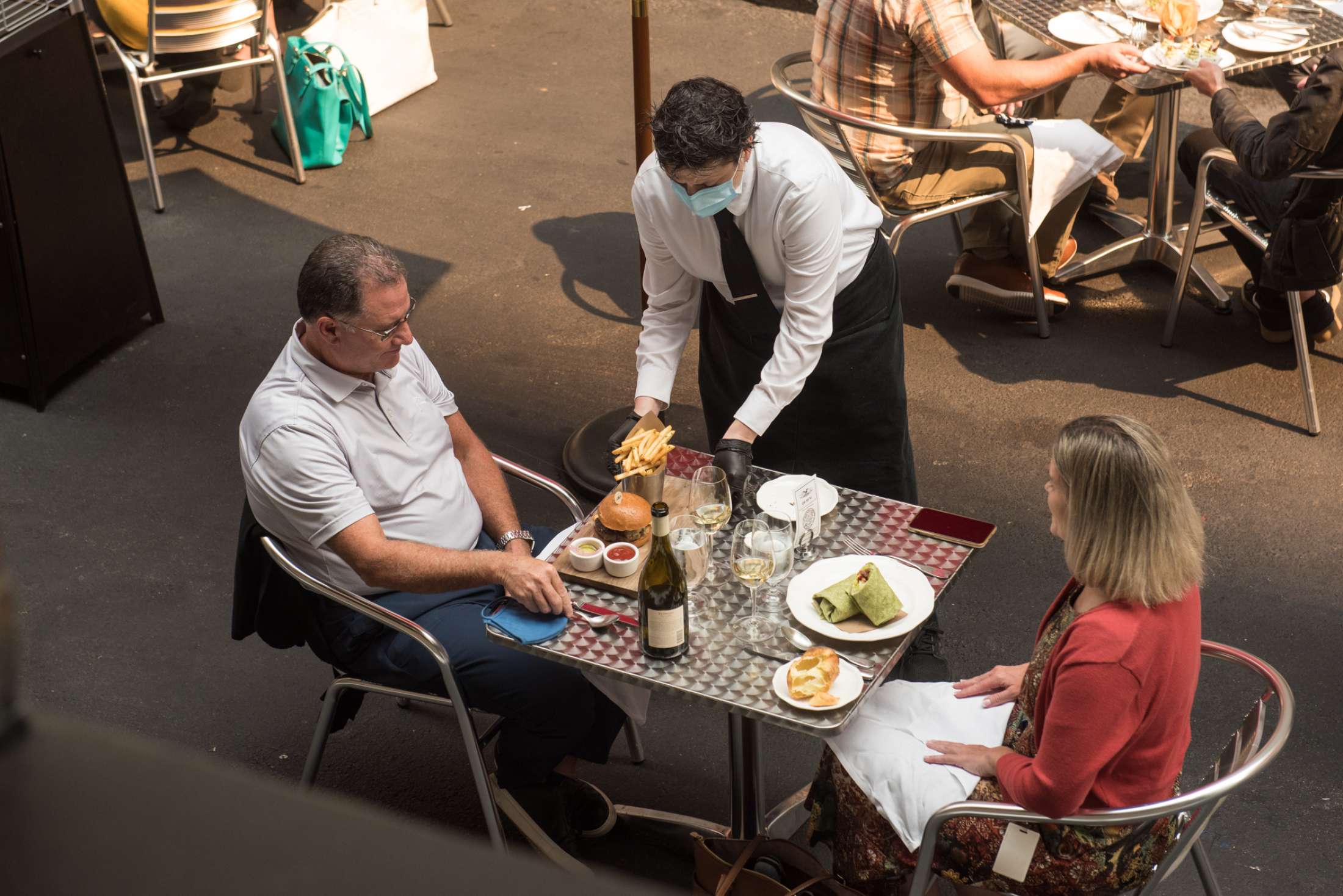Did we really need to shut down outdoor dining in the Bay Area? Scientists weigh in.

It’s nine months into the pandemic, but it feels like we’re right back at square one: Most restaurants across California have once again been forced to shut down all in-person dining. Some restaurant owners aren’t having it.
“To just say do takeout is literally laughable,” said Mourad Lahlou, chef-owner of Mourad and Aziza in San Francisco. “For me, the government has to do what it needs to do to protect people and make sure they stay healthy, but at the same time, think about the businesses, and think about the deeper impact this shutdown is going to have on people long term.”
Lahlou isn’t the only one upset. After the California Restaurant Association filed a lawsuit against Los Angeles County, a judge ruled Tuesday that LA health officials acted “arbitrarily” and without a proper “risk-benefit” analysis when they banned outdoor dining (although this will not restore outdoor dining anytime soon, as a more sweeping shutdown ordered by the state is now in effect). Celebrity chef Guy Fieri even entered the fray, expressing support for the lawsuit with a tweet that said, “We gotta keep Flavortown open for biz!”
Restaurant workers everywhere are echoing a common sentiment: There is no concrete evidence backing up that outdoor dining spreads COVID-19. And some scientists agree.
“I feel a great deal of anguish for the restaurant owners, and then they weren’t told there’s clear evidence,” said UCSF infectious disease expert Dr. Monica Gandhi. “Can the city, who has a robust contact tracing system, present evidence to justify that move better?”
She pointed to a study from the Centers for Disease Control and Prevention that showed eating at restaurants increased the risk of COVID-19, but did not differentiate between outdoor and indoor dining. A study in Chicago also showed dining drove risk, but it didn’t take into account the precautions taken for outdoor dining, either.
“There hasn’t been a study that looks at the impact of outdoor dining … When I think of places where they’re masked, there’s distancing, ventilation and hand hygiene, I don’t think those are places that are likely to create spread,” said Gandhi.
Of course, not all restaurants will be following regulations perfectly, and the tendency of people to gather at restaurants with others outside their household is a factor that may drive transmission as well.
“Whether outdoor restaurants are the right thing to target, I couldn’t tell you, but whether it’s going to the beach, or just people who come from different households who are not in the same bubble, who mix together around the dinner table without their masks on, those are where we get those microclusters of transmission,” said Dr. George Rutherford, a professor at UCSF and head of the division of infectious disease and global epidemiology.
And while studies have shown the risk of transmission is much lower outdoors than indoors, “We know there has been outdoor transmission of COVID,” added Rutherford.

